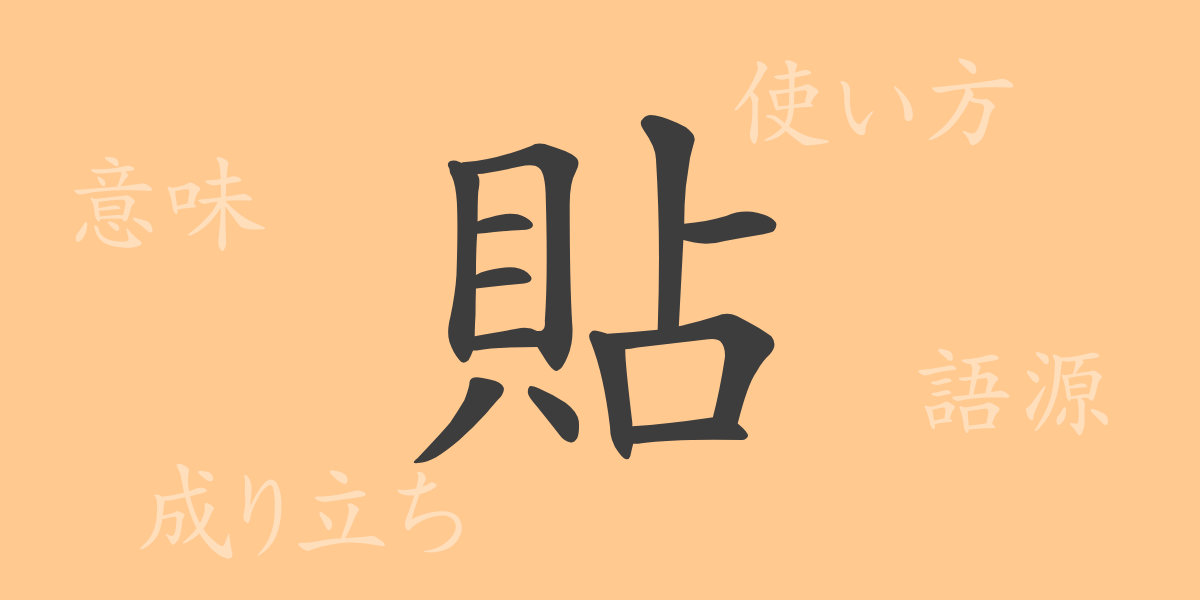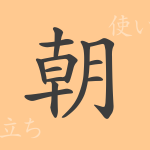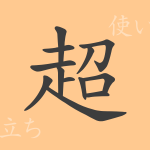The Japanese Kanji ‘貼(テン)’ is deeply rooted in the culture and frequently used in daily life, embodying a wealth of meaning and history. This article focuses on the Kanji ‘貼’, exploring its etymology, contemporary usage, and its presence in idioms and proverbs, inviting you into the world of ‘貼’, a symbol of the beauty of the Japanese language.
Origins of ‘貼(テン)’
The Kanji ‘貼’ originates from ancient China, combining the radical for ‘shell’ (貝), which traditionally symbolizes wealth, with ‘占’, indicating sticking or adhering. Initially representing the act of affixing something as a means of protection, it evolved to mean ‘to stick or attach’. Over time, its usage has expanded broadly, being adopted in various contexts.
Meaning and Usage of ‘貼(テン)’
Primarily, ‘貼’ means ‘to stick something onto a surface.’ It is used in physical contexts, such as attaching objects, but also metaphorically, as in ‘費用が貼る’ (costs accrue), where it relates to financial contexts, indicating expenditures.
Readings, Stroke Count, and Radical of ‘貼(テン)’
‘貼’ has various readings and uses, which differ according to the context:
- Readings: On’yomi ‘テン’, Kun’yomi ‘はる’
- Stroke Count: 12
- Radical: ‘貝’, associated with wealth and money in Kanji.
Idioms and Proverbs Using ‘貼(テン)’
‘貼’ features in many Japanese idioms and proverbs, enriching its linguistic landscape:
- 貼り紙(はりがみ) – Notices or posters, literally papers that are pasted up.
- 貼り付け(はりつけ) – The act of sticking something directly or, metaphorically, being in close contact.
- 金を貼る(きんをはる) – Spending a lot of money, often implying a significant financial burden.
- 面に貼る(つらにはる) – Literally ‘to paste on the face,’ used to describe shameless or impudent behavior.
Conclusion on ‘貼(テン)’
The Kanji ‘貼’ shows its versatility through its use in physical and metaphorical contexts, ranging from literal applications to financial implications and even social behavior. This exploration into ‘貼’ not only enriches our understanding of this Kanji but also illustrates the deep cultural and practical applications embedded within a single character.

























